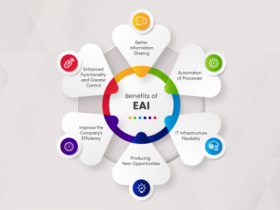The dynamic world of cloud computing requires resilience, scalability, and agility. Traditional monolithic architectures are struggling in dynamic business environments. Microservices architecture transforms cloud application development here.
Deconstructing Microservices: Monolith Dismantling
Imagine a monolithic application as a massive fortification with interconnected functions. A single feature change requires system-wide structural changes that postpone updates. This strategy is clunky and ineffective in fast-paced cloud computing.
Microservices architecture can break this monolithic structure into multiple self-contained services. Each service handles a specialized task, like order processing, shopping cart management, or user authentication, like Lego bricks. These services communicate via APIs to exchange data.
Cloud Services Are Adopting Microservices Revolution
Undoubtedly, cloud services and microservices architecture work well together. Let’s examine microservices’ major benefits for cloud computing:
Faster Growth
Microservices can be built, tested, and put into use by teams without changing the program. With agile development, new products can be made faster and to meet the wants of a changing market. Each microservice can be built by developers using a number of different computer languages and frameworks. Because they are flexible, cloud platforms let people be creative and try new things.
Increased Efficiency and Scalability
Microservices can grow or shrink based on their resource needs thanks to cloud computer technologies. This saves money and time by not building up the whole program. Fault separation separates a broken microservice from other services so that the whole system doesn’t go down. This ensures that services will keep running and makes applications more resilient.
Ongoing Delivery and Implementation
Microservices enable developers to construct CI/CD pipelines. Frequent, automated deployments of specified services reduce regressions and shorten the time-to-market for new features. Solving problems at the microservice level simplifies monitoring and debugging. This cuts downtime and streamlines maintenance.
Empowered Teams and Productive Developers
Development teams have clear ownership and accountability with smaller, more precisely defined microservices. Because each team has a specific purpose, efficiency and concentration increase. New team members can quickly understand and contribute to microservices without program knowledge. This accelerates development and onboarding.
Cloud-Native Vision
Cloud-native apps use cloud computing’s built-in features. This mindset matches microservices design, which promotes containerization, infrastructure as code (IaC), and API-driven interactions, creating a cloud-ready application landscape.
Past the Buzz: Handling Possible Issues
Microservices have many benefits, however there are drawbacks:
- Managing many interconnected services requires good orchestration and monitoring technologies.
- Multiple service issues can be difficult to find and fix. Distributed tracing and debugging tools are necessary.
- Complex interactions across multiple services may need integration and end-to-end testing rather than unit testing.
Conclusion
Cloud developers benefit from microservices architecture, however it’s not a cure-all. Cloud services and risk mitigation can boost agility, scalability, and resilience. This will help them succeed in the ever-changing cloud services landscape. Microservices unlock the possibilities of flexible, efficient, and innovative applications. Applications will control the future.











Leave a Reply